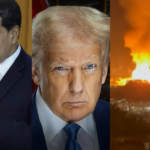
The global economy has not yet disintegrated, despite fears about deglobalization and the fragmentation of trade and investment as nations coalesce into pro-US or pro-China blocs. But we are still in a kind of fake war as economic tensions rise.
So too are tensions in the international payments system and capital flows, as the global monetary order tries to adjust to a new regime of sanctions and other restrictions. This could be the calm before the storm or the beginning of a prolonged stagnation.
A recent presentation by the IMF’s first deputy director general, Gita Gopinath, helped put the threats into perspective, although not even that august institution seems to know whether they will end in open conflict or prolonged isolationism.
In his speech to the Stanford Institute for Economic Policy Research, titled “Geopolitics and Its Impact on Global Trade and the Dollar,” on May 7, Gopinath noted that global economic ties are changing in ways not seen “since the end of the Cold War.”
This is obviously true. It begins to appear that the changes will not lead to a hot war, but to a new ice age, where blocs aligned with the US and China coexist in an environment of slow growth and tension.
Interestingly (and rather depressingly), the International Monetary Fund estimates that global economic growth is expected to slow significantly over the next three to five years, compared to the last decade or so.
This rather bleak scenario – outlined by officials during an IMF briefing in Tokyo that I attended after Gopinath’s presentation – contrasts with the short-term optimism contained in the IMF’s most recent World Economic Outlook about the resilience of the global economy. demonstrated since the Covid-19 pandemic.
A long-term slowdown would have causes that go beyond growing geopolitical and geoeconomic tensions. Adverse demographics and declining productivity are among them, but a fragmentation of the global economy and trade and investment looms large.
Gopinath suggested that threats of economic fragmentation have not yet significantly affected growth, but that is small consolation given the stakes in what is turning into an undeclared economic war.
After years of shocks, including the pandemic, the war between Russia and Ukraine, and ideological conflict centered on (but not limited to) the United States, China, and Russia, countries are reassessing their trading partners based on economic and national security concerns, she noted.
Foreign direct investment and trade flows are being redirected along geopolitical lines and some countries are reassessing their heavy dependence on the dollar in their international transactions and reserves.
For China and Chinese-leaning countries, IMF research shows that the dollar’s share of trade finance payments has fallen since the start of 2022, while the yuan’s share has more than doubled to 8 percent.
Similarly, the yuan’s share of Chinese non-bank entities’ cross-border transactions with foreign counterparties was close to zero 15 years ago, but has risen to about half since the end of last year, while the dollar’s share has fallen from about 80 percent in 2010 to 50 percent. Percent.
If these trends continue, the risk is that the world could “end up moving dramatically away from a rules-based global trading system,” Gopinath said.
New trade restrictions have more than tripled in the past five years, while financial sanctions have increased sharply, according to the IMF. The geopolitical risk index has soared and private sector concerns about fragmentation have increased.
There are still no clear signs of deglobalization, at least at an aggregate level. Since the 2008 global financial crisis, the ratio between the world’s trade in goods and its gross domestic product has remained stable at between 41 and 48 percent, but beneath the surface there are increasing signs of fragmentation.
Notably, China’s share of US imports fell by 8 percentage points between 2017 and 2023 following worsening trade tensions, while the US share of China’s exports fell by around 4 percentage points. And direct trade between Russia and the West has collapsed.
Things could have been much worse, given the degree of decoupling between the geopolitical rivals, had it not been for the emergence of what the IMF calls “connector” countries – the re-routing of some trade and investment through these third countries is helping to offset the erosion of direct links between the US and China.
Since 2017, many countries that have seen a growing Chinese business presence have also seen their exports to the US increase. Notable among these “connector” countries are Mexico and Vietnam, whose role as intermediaries appears to have helped cushion the global impact of decoupling. But the IMF questions whether this can continue.
This economic fragmentation is not significantly different from the early years of the Cold War. But fragmentation is much more costly this time because, unlike then, when merchandise trade accounted for just 16 percent of the global economy, it now takes up a much larger share of 45 percent.
Also at that time, countries within the blocs were generally removing trade restrictions, “whereas right now we seem to be much more in the environment of just a lot of countries becoming protectionist and looking inward,” Gopinath noted.
If we are indeed at the beginning of a new cold war, we would do well to remember that the last one lasted almost half a century. “It is really crucial to ensure that we preserve the great gains that come from this type of economic integration,” said Gopinath. “We need to have enough guardrails to make sure you don’t throw the baby out with the bathwater.” National leaders need to listen.
Analysis carried out by Anthony Rowley, a veteran journalist specializing in Asian economic and financial affairsand published in SCMP.
Source: https://www.ocafezinho.com/2024/05/12/analise-uma-guerra-fria-2-0-exigiria-um-preco-economico-muito-mais-elevado/

